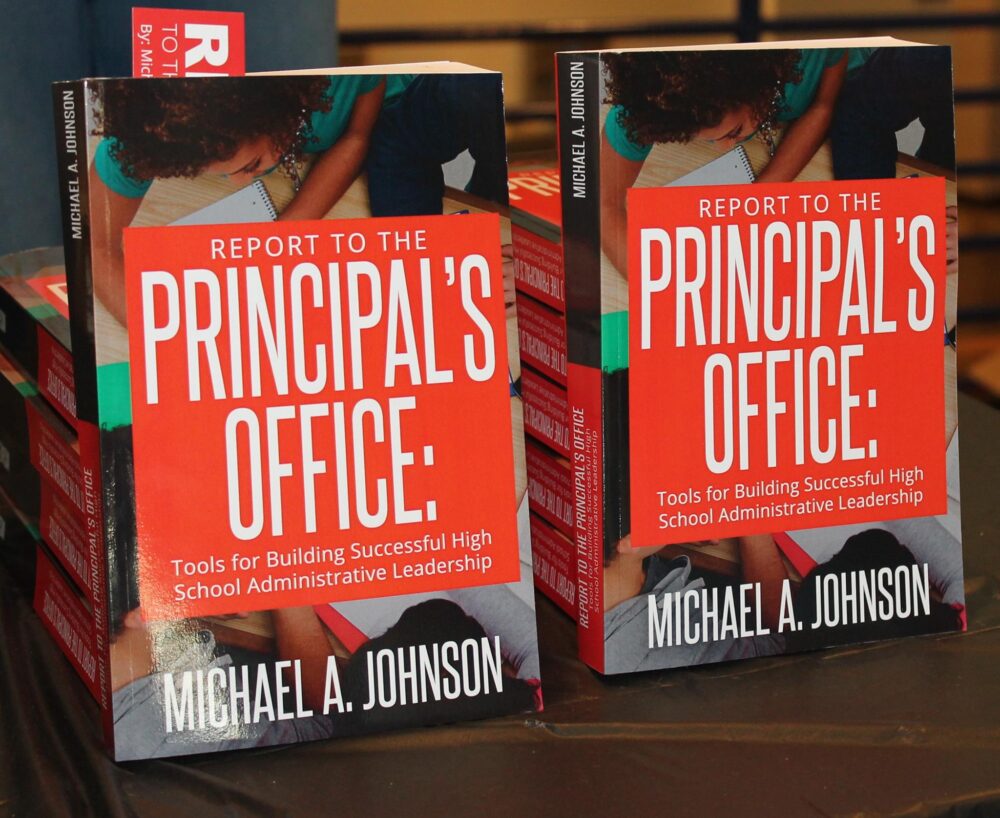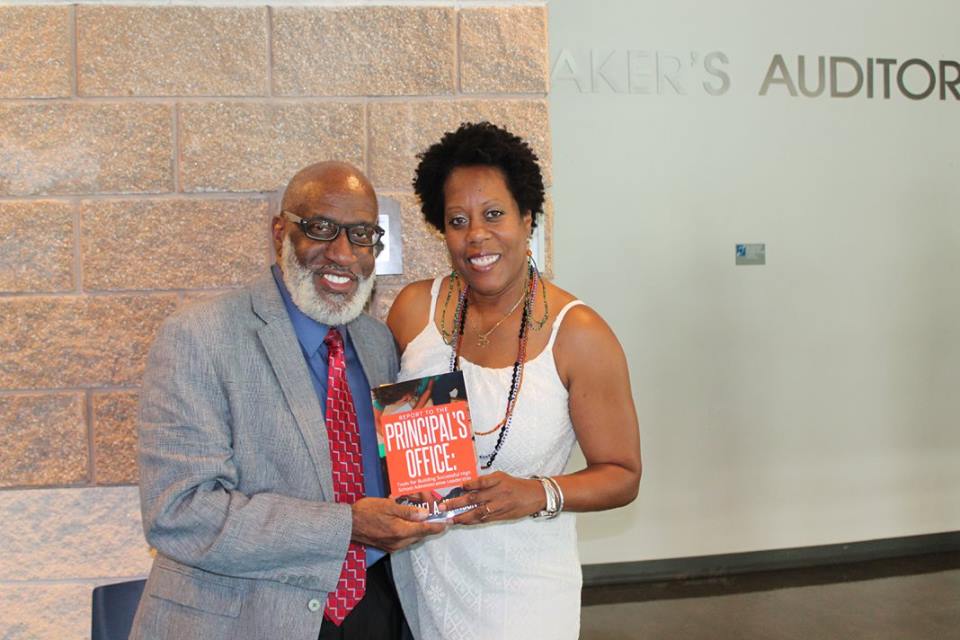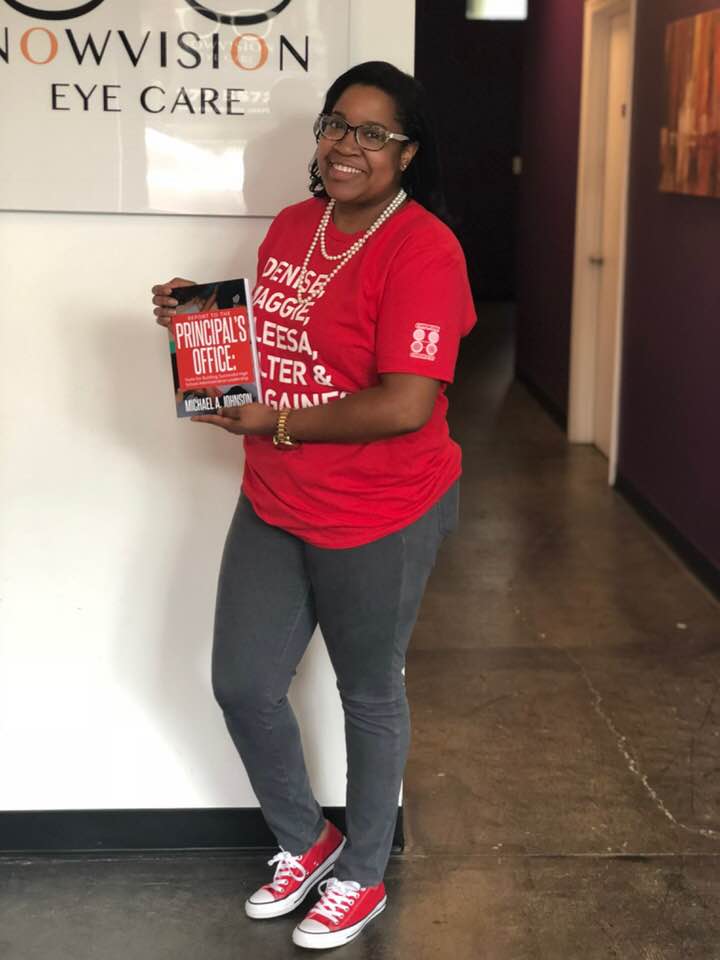Dear Educators, please get them (eight graders moving up into the ninth grade) to start this journey on the right foot and on the right foot path!
Chapter 28 (presented here with some ‘blog-format-friendly’ and for the non-professional educator reader explanatory alterations) was based on 11 years of observing, analyzing, and compiling the best attributes of my top twenty-five students in each graduating (12th-grade) cohort. Also, as a superintendent, evaluating high schools (principals): course pass rates, grade promotion rates, ACT-SAT scores, Advance Placement (AP) courses participation and test-score achievement statistics, specific school (e.g., CTE) graduation requirements and success data, performance on required state and district standardized exams, graduation rates, and the ‘transcript and diploma quality’ of those graduating seniors.
Although, I included some student-specific personal and family profile qualities, so as to make these students more recognizable, and thus more strategically supportable for high school principals; I also worked hard to eliminate as many unique characteristics, idiosyncratic study habits, gender-specific methodologies and attitudes (in my school, girls statistically performed better overall, including in STEM courses), and distinct cultural, ethnicity, and family-structure factors as possible to get to the commonly shared and more easily accessible (and easy to be taught) soft behavioral and hard technical skills needed by present ‘moving-up’ eighth-graders; those qualities that can be modified and adaptively crafted for their own personal and critically challenging new high school experience.
My experiential hypothesis is this:
For the overwhelming majority of students; the success of the high school experience, and indeed the quality of a student’s post-high school life experience, can very much be influenced and/or determined by the level and quality, and quantity of that quality, of their knowledge, information-gathering competencies, adaptability skills, academic, behavioral and attitudinal performance in the ninth grade —This is specifically and applicably true if a student wishes to pursue a post-high school STEM college major and career!… I’ll get to the parent push-pull advantages, the level of K-8 ELA (English Language Arts) e.g., reading, writing and speaking skills, and the quality of eighth-grade pre-Algebra or full-Algebra mathematics course teaching and learning, the GPA raising strategies of preparing for and taking AP courses, as influencing and producing quality-of-outcomes graduation factors (variables) in a future blog post.
Chapter 28: Practices of a Successful High School Student
Every year for eleven years, I stood as a high school principal before a large gathering of eager young people and their anxious parents at the incoming student/parent orientation. Every one of those years, I have tried to hammer home the same list of themed warnings and recommendations. Here are some summarized and condensed samples from my speeches:
- “I will first get out the saddest and most difficult part of my message today. And that is, as I look out at this lovely audience, think and ask myself, which parent is an enabler of academic poor performance and negative non-productive behavior? And, which parent is fully supportive of what we are trying to achieve in this school and supportive of their child being an academic success? Who in this gathering of parents and students, is really listening to me? Which student is wrongly and tragically planning, at this very moment in their minds, to bring their old school to this new school; bringing their old selves when a new self is required? Which way will this or that person go, based on hearing or not hearing my words?”
- “One of the first and most important decisions you will make as a freshman is your choice of friends. There is no truer saying then “birds of a feather flock together!” Eagles don’t associate with pigeons or chickens unless its mealtime, and that means the other two birds are on the menu! As you move through life, your priorities will change, and with that change there may need to be a change in social relationships; don’t stress, it’s a natural evolutionary part of life. Pick friends who are moving in a positive direction. Pick friends who are as, or more focused and disciplined than you are!”
- “Your guidance counselor will help you to complete the required assignment of designing a Graduation Critical Plan/Path Chart. This plan starts with your graduation objective; flows backwards (12-11-10-9), taking notice and care of every decision until it reaches your present moment. It will map and guide you through the difficult first day, week, month, and year of high school. Your ninth grade’s schedule and your attitude in response to that schedule determines your true intentions for achieving your graduation objective. This plan will measure your level of commitment by your academic performance in your ninth grade classes; it will expand to include critical actions to be taken, and the many important decisions that must be made during that same time period (at each grade level). The quality of your study and schoolwork production. Your plans, goals, and objectives for after-school, weekends, school breaks, and holidays, seasonal and summer vacations, from the first ninth grade semester, through to the last semester of your senior year. You should change the plan/path for improvement and enhancement purposes only! Too many students are forced on lowering their personal career goals and life expectations because somewhere between the ninth and twelfth grades they lowered their commitment to work hard for their dreams. Enter high school with a good plan. Evolve throughout your high school experience guided by a good plan. End your high school journey with a good senior post-high school plan!”
- “The first grade of the year in English will be determined by your work on the written assignment from your before-school book reading project (sent to all incoming 9th graders). Not only will this be your first recorded grade in high school, it will also (based on the work you put in) give us, the staff, a first look at your readiness and serious profile!”
- “In this school, ninth graders will be required to take the Pre-Act and PSAT 10.”
- “Failing Classes makes high school life less fun and challenges a student’s ability to pursue a desired career objective. Failing classes can knock you out of exciting electives that enhance your transcript and are enjoyable to take. Failing classes lowers your GPA! And how many students have I seen scrambling in the tenth, eleventh, and twelfth grades, struggling to raise their GPAs to meet internship criteria, a college program, or scholarship GPA requirement they are pursuing; failing classes will block you from great and wonderful after-school programs, activities, and trips. If you are in a course-grade aligned specialized major or CTE (Career Technical Education; chap. 16 RTTPO) program, a failed class can take you out of sequence, thus disabling you from finishing the program in the scheduled time period and miss gaining access to an apprenticeship program. No matter what anybody tells you, summer school or any other type of credit-recovery program, will more often than not, offer a less rigorous/demanding level of academic work than the course you failed in regular school.”
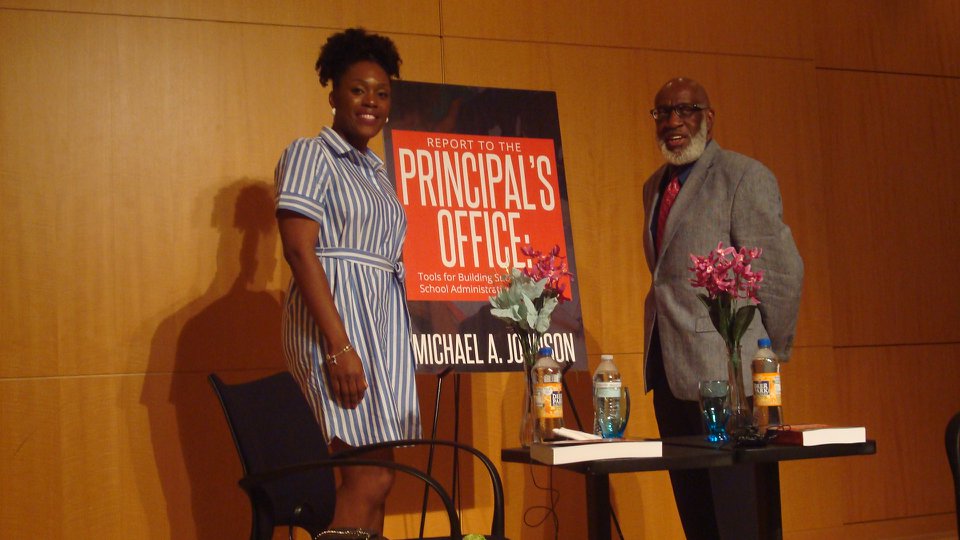
Note to principal: A sure sign of a district or school’s academic-super-vision ineffectiveness is a huge and wasteful amount of money being spent on students who fail classes, too often for reasons totally unrelated to ability. The principal should meet early in a term to discuss with the APs and teachers, those students who are simply “choosing” to fail a class; and then, with an academic intervention/counseling strategy, support and encourage those students to move into the “pass” column side of the ledger. Now, understandably, the school and district are obligated by regulation to make credit recovery expenditures; but we should not kid ourselves, it costs the individual students, districts, and schools dearly when high school students fail classes. It is a huge, and for the most part, unnecessary cost for either establishing a credit-recovery program, or when a failing student occupies a seat in the same course the next semester or year. In any event, the money being spent in the credit-recovery area could be utilized in more positive and productive ways. Finally, students should seek to protect the good image and integrity of their transcripts at all times! C’s, D’s, and F’s are like those lights on a well-lit Christmas tree that don’t work—dark spaces on their transcripts! Make sure you convey to 8th-grade students that:
• “If your middle school experience was less than exemplary, you should think of the moving to a new school experience, where people are going to meet you for the first time, as an opportunity to redefine yourself into a new and better student self-image and profile.”
• “Hard work and perseverance can match and overtake natural skill. But when you match hard work, perseverance, and natural skill and talent, what we have is an academic power agent!”
• “You don’t get a second chance to make a first impression. Impress teachers and administrators early and in all of your classes. Teachers, like all professionals, talk passionately about their work. When your name comes up, let it be in the context of admiration and praise! (Plus, you will need some of these teachers to provide both verbal and written recommendations over the next four years!)”
• “You will start out in all of your classes with an “A.” You will then, through your actions (or inactions), maintain or lower that “A” designation. Teachers here don’t give grades; they simply match an A-F grade with your effort and performance, and record the result.”
• Then it is that painful recognition moment when I explain the difference between the K-8 “Age-Seat time” promotional system; and the precise, credit-earning driven high school “Carnegie” system for promotion to the next grade. And further, explain (again I apologize to my wonderful elementary-middle school friends and colleagues), “That for the first time in your public school education life, you are about to embark upon a journey to earn a legally determined, regulated, and monitored (by the state) graduation diploma. The only power the principal and staff has in this process is to add up your credits, confirm that you have taken and passed the required courses–including the labs if required, and that you have sat for and passed the required standardized exams, we can then submit your name as a “candidate for graduation” to the superintendent’s office. There is no “seat-time” or “aging-into” a high school diploma. And in this school you will not be allowed to participate in the graduation ceremony if you are not a “certified” graduating senior. Welcome to the high school world!”
• “One of the greatest threats to ninth grade success is planning and organization. Each of you will receive an academic year-long planner/calendar. Your student handbook as well as individual teachers’ syllabi will advise you as to how to plan long-term assignments, projects and exams. Your academic boat will sink early and quickly if you don’t effectively plan and organize your schoolwork, study, and personal life schedules…”
• “There is a qualitative and quantitative difference between homework and study. And the differences are connected to the variations of external (teacher assigned) and internal (self-organized by student) motivational and actionable approaches to learning and mastering the academic work. You must understand the difference in the time you devote to homework, class projects, assigned daily readings, and self-organized study periods. We will help you (the first 2 weeks of your English class) in this school by teaching you how to study; you would be wise to pay attention to those instructions!”
• “You must adjust to and manage the different personalities and teaching styles of individual teachers. They (having 150-200 students/day) will not adjust to you!”
• “I have never known a high school friendship that was so strong, that an on-time graduating senior told their best friend (not graduating on time), ‘You know, we are such good friends that I am going to delay my participation in all of the graduating senior activities, including the prom, senior trip, and the graduation ceremony itself; and stick with you for a summer or January graduation date!’”
• “The audience in the classroom that you entertained with your sit-down comedy routine will not be there to applaud you when you are facing the consequences of your actions in the dean or principal’s office; and they definitely won’t be with you as they get internships, jobs, and pull in college acceptance letters and scholarships!”
• “If you know more than your teachers then you are in the wrong place and position. You should be applying to the school for a teaching position, not a student position!”
• “In this school, you will be asked to produce your personal best in every aspect of school life. It will, at times, feel uncomfortable, and perhaps even a little painful; but you can, and will, survive it. Others have done so before you, and you will also be successful.”
• “You may feel at some point during the next four years that you are falling in love. I can assure you that this terribly distracting ailment, like a head-cold, is temporary and will go away if treated with intense academic study and a focus on a successful graduation.”
Principals: It is always good to include highly academically successful student ambassadors/tour guides for high school orientations. In this way, I am trying to present students who could serve as models for what the high school represents (and those qualities we want to see represented in all students). You are also helping these student ambassadors to enhance their “senior portfolios” (similar to a resume or CV), but that’s another chapter (7) in the book. I am also informally setting up and encouraging a new set of friends and mentors for incoming students. A typical comment from parents attending my 9th-grade orientation or open-house events will be to praise those (high-performing–honor roll) Student Ambassadors who were amazingly poised, knowledgeable, and professional in their presentations. In addition, these students (without using written notes) provided a wealth of well-spoken touring-guiding school information to the attendees! These outstanding students could also explain school programs and activities outside of their primary area of academic concentration or participation; in other words, they could ‘break down’ a CTE concentration construction trades major even though they may have been part of the pre-engineering or pre-medicine program track (and vice versa). And so, I now discuss the successful collective profiles and powerful attributes of these wonderful School Ambassadors and other highly effective high school students. Keep in mind that I am presenting here a composite of characteristics of the best student practices of many (thousands of) students I have worked with over the years. We should also keep in mind that there is no such thing as a perfect student or human being. But I believe there is a way to at least make one’s life more positive, productive, emotionally satisfying, physically comfortable, and meaningful by practicing and perfecting those qualities that ultimately lead to a successful high school and post-high school life journey!
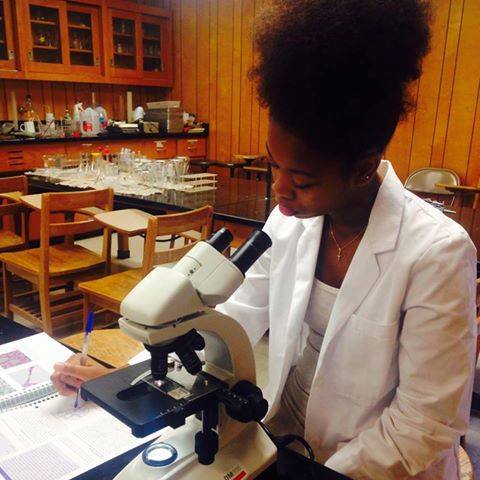
Who are the most successful high school students, and what is it that they do to make themselves successful?
• (out of the student’s control but highly influential) It always increases the students’ chances for success if the parent and school are “tag-team” members. That teamwork is enhanced when the parent and school share and enforce the same learning and behavioral values and standards.
• (again, out of the student’s control) Having a parent or guardian who sees and understands public education as the only real and important path for the child to realize generational improvement. (These parents are not playing, especially with male students, the NBA/NFL life-lottery-game with their child’s future, rather the type of letters they are focused on are CTE, BA, MS, MBA, M.D., JD, DDS, P.E., RN, and PhD, etc.!)
• (out of the student’s control but a constant attribute) Parents are aware of the purpose, role, and meaning of informal (out of school) educational activities such as dance/music/art lessons, martial arts, tennis, chess, scouting, and visits to museums, cultural institutions and public learning activities. (Note to principal: With this category and with other “out-of-the-student’s-control” resources and advantage areas, you must step-up and step-into a more dynamic and comprehensive In loco parentis role).
• (out of student’s control) Even though the student is a teenager, the parent still exercises a great deal of effective supervision and advisory oversight over the critical successful transition into adult aspects of the child’s life.
• (out of student’s control) The student has the advantage of not being forced to make critical life-determining decisions without the wise experience of a parent or guardian who does not believe that the start of high school signals the end of their parenting responsibilities. These students are not unnecessarily thrust into the dangerous position of learning by their own mistakes. (Oddly, some parents of not-so-successful students have even verbalized that wish to me!) However, the parents of successful students help that success by providing them with lessons of their own life mistakes as well as the lessons of the mistakes made by other adults they have encountered during the course of their lifetime. These parents understand that good parenting is nature’s way of minimizing the number of harmful, and sometimes deadly, events that could prevent an offspring from reaching a successful adult life.
• (Not advocating for religion here, just stating an observation.) Highly successful students are likely to be regular attendees and actively involved with a faith-based institution.
• (For Black and Latino students) Did not attend a middle school where they were forced to hide or suppress their smartness. It helps to have a high standards, high expectations, and rigorous middle school academic program, particularly those students who have taken high school algebra or some other rigorous pre-algebra mathematics course in the eighth grade.
• “Emotionally-Situationally-Intelligent”: Able to pick up human-inter-action social cues, aware of unwritten rules, pick their battles, knows there is a time to play, a time to work, a time to laugh, and a time to be serious. These students tended to respect adult authority figures, even if they are lodging a protest, they always protest smartly, seeking not to seriously damage or sever the relationship with the staff person against whom they are lodging the complaint. Often it is in reference to a grade a teacher awarded that they thought should be higher. These students are well mannered, well spoken, polite and generally likable. As in all social, political, organizational interactions, likability is an advantage providing strength.
• Students who are either first or second-generation U.S. citizens; e.g., the children of emigrants. (again, just saying, don’t shoot the messenger!)
• The students who are more interested in pleasing their parents as opposed to pleasing their peers. They feel a sense-of-responsibility for the upholding of some family tradition or expectation for educational academic success; especially if they are potentially the first, or one of few in the family to attend college. They (and their families) see education in general and college in particular as a major life-changing-enhancing experience that is worth every possible sacrifice. These students are aware that there is no big (and in many cases any) family financial inheritance waiting for them when they reach adulthood.
• Hard work, academic success, and a positive attitude gives these students an advantage. Now, I don’t have quantifiable data to prove this. But based on my observations and conversations with teachers over the years, I believe that these students are able to gain (based on their past performance; and usually positive attitude) an advantage in the gray area grading phenomena. That is, when a grade of a student’s work product (as often happens) falls between a B+ and an A-, or an A- and an A, these students will always be given a higher grade (or if appropriate, the benefit of the doubt!) Perhaps, unconsciously or not, on the part of their teachers. I have always warned students of two realities outside of the control of the principal: (1) Teachers are human (they have feelings). (2) Teachers talk to each other.
• These students will automatically (consciously or unconsciously) seek to connect and create friendships with other high-performing students in their own (or a higher) grade cohort. Often, this is in some ways a result of being in constant contact in the same clubs, programs, activities, projects, honor roll society events, academic teams (e.g., debate, chess, robotics, etc.) or athletics (especially non-stereotypical e.g., gulf) teams. Also, the transition to high school will be used by some high achieving ninth grade students to make definitive (future defining) friendship and social association changes.
• Starting in the ninth grade (and definitely by the tenth grade), these students, with or without adult encouragement, will quietly, in almost a natural and unconscious way, seek out and begin to model themselves after the high-performing “legendary” high-performing sophomore, eleventh and twelfth graders. In another related and interesting phenomena, the sophomore, junior and senior high academic performers will somehow recognize this, and, seeing these high-performing 9th-graders as kindred spirits (younger versions of themselves), will begin to “adopt” these ninth and tenth graders. This is why it’s important for the principal to establish a School-Based Honor Society, complete with identifiable clothing, induction and recognition ceremonies, fun activities, trips and rewards, so that high-performing students can meet and establish friendships, mentorships, and a mutual support society. Further, you should ignore and reject any criticisms that you will receive if you work in a majority Black and Latino school saying that: “all you care about are the smart kids.” The effective principal seeks to serve and protect all of the different performance cohorts of students in the school. High academic performers deserve as much of your attention as any other group of students in the school; students should not be ignored or penalized because they do well academically. Plus, that positive attention you give to high-performing students will actually serve to empower and strengthen the resolve of underperforming students, and at the same time, also grow the ranks of the high-performers!
• Sometimes these high-performing students will reveal themselves early. They did not come to high school to play! You can even see it in their eyes during the Summer Bridge Program, the high school fair, orientation, a school tour/open house, or even when you make a presentation at their middle school. That look that says, “I am serious about my education, I’m ready!” And important in Title I schools, those focused students of color, who by some means have built up a natural immunity to negative peer pressure about appearing, acting and being smart, they are indeed ready to soar!
• High-performing students are equal opportunity course attackers. This means that even though their career objective might be in a particular area, they will proceed to systematically and aggressively try to earn an “A” in all of their classes, regardless of the academic course/department. They want and “A” in Physical Education and an “A” in Physics! The best ones have the ability to make every teacher feel that the class they are teaching is the most important class in the school. These students are constantly checking their GPA’s and the status of their class ranking. They are also fully aware of their fellow high-performing and pursuing a high GPA classmate competitors.
• They possess the ability to understand that the course syllabus is finite. And, yet, they know that their infinite minds, combined with their discipline and mastery of their own time and study-skills efforts, can successfully overtake and conquer any course in the school because it has already been done many times before. They will seek and receive “inside-info-intelligence” from their high-achieving uperclassperson “kin” on a particular teacher and course and use that knowledge to their advantage (note to teachers: which is why you must annually change up those exams!). As mentioned earlier in the book, I always made sure to have multiple copies of textbooks on the same subjects, but from different publishers in the library for study purposes (reading the same concept, especially with science and mathematics, in a different textbook can be of tremendous comprehension help to students). These are the students who will take advantage of that study technique, and will for example, read three different chemistry textbook chapters on a single topic until they understand and absolutely nail that concept! (Note to principals: I acquired these extra subject area textbooks by simply reaching out to the publishing company’s sales division.)
• Students who read independently (not school assigned) for fun and enjoyment.
• They are prepared to take full advantage of the most unexpected arriving opportunity. A special trip, a networking-empowerment event, greeting guests to the school, a print, radio or television interview, scholarship opportunities, internship and jobs. These are the students who have followed instructions and have their resumes updated and ready; they can prepare a speech immediately with the help of an ELA teacher who they have enrolled as an academic enhancement ally by virtue of that student’s hard work in their class; and they are fully prepared (the next day) to “dress for success” (having been taught by the staff) for any type of advantageous setting.

Note to high school principals: The school must prepare students not only for the linguistic and attitudinal code switching demands of society, but also the behavioral and presentation code switching requirements. Soft-Skills like: What “being-on-time” in different situations means, “networking” or the “30-60 second elevator pitch”, are not naturally acquired by any teenager regardless of socio-economic status. What also must be taught is a working knowledge of situationally appropriate attire; what is “formal wear”, “interview attire”, business professional, business casual, professional, etc. All of this under the standard of “Dress for Success”; which you may want to dedicate one day a week to this effort (and buy the dresses, skirts, suits, ties, shoes, blouses, shirts, etc., for students who can’t afford them, and distribute them confidentially). A lot of clothiers and department stores, fraternal-sorority originations and corporations, will be more than happy to help you with acquiring these items for your students. Invite prominent professional men of color for a “How to tie a tie breakfast” (Professionals are more likely to help you with this and similar efforts if you don’t take up their whole day!) This event may sound simple, but for many male students this wonderful experience maybe the first and few positive experiences they have had like this with a male figure. Don’t have the quantifiable data or explanatory line/bar chart, but I can assert with the utmost “memory-confidence” a guarantee that on “Dress for Success” days, your student to student, student to staff conflicts, disciplinary issues will drop dramatically!
• Strongly self-reflective and meaningfully metacognitive: These students continually think about their own thoughts, behaviors, the effectiveness of the strategies and techniques they utilize, and how to rid themselves of unproductive and unrewarding practices. The ability to both see and change an approach that is not yielding the results they desire.
• These students have a four-year plan of action! They will seek to avoid any and all engagements, involvements, entanglements, conflicts and actions that would threaten the success of their four-year plan. They have the amazing ability to appropriately and properly contextualize and departmentalize fun and enjoyment and serious hard work. They have high ‘deferring gratification’ skills.
• They are fiercely, though not necessarily viciously, competitive.
• The top students always appear to have great time management and organizational skills. They have the ability to prioritize assignments and projects weekly, monthly, and across an entire semester or year, including avoiding that common ninth grade curse of disorganization. They start and finish high school in the same effective way. Again, they have their eyes on that GPA race from the start of ninth grade!
• They have figured the principal out! They understand well the role and power of the principal, and they utilize that understanding to their advantage. Just as they have successfully done with teachers in all of their classes, they have also analyzed and processed the standards and expectations of the principal. They will come and speak to the principal if they feel that they are not being adequately prepared to be their best academically competitive selves. For a high school principal, this is one of the most difficult conversations to navigate, as you try to balance professional responsibility and professional ethics. The students will never come to you prematurely, which means they are almost always correct. In order to maintain your moral authority and credibility, and to not embarrass the teacher. You must take some kind of quiet, confidential and professional affirmative problem-solving action. The good news is that these are the types of students who won’t show their teachers up because of the actions you have taken to correct the situation.
• High-performing students seem (with some exceptions) to avoid intense high school romantic relationships that can distract them from their academic work.
• The self-awareness to maximize their gifts and talents, and at the same time, successfully minimize and manage their weaknesses. Some of them will struggle with “people” and “patience” skills; this is where you might want to help them principal by teaching an “Effective Leadership” class or through some leadership skills development seminars.
• They know how to effectively utilize the text book, review book, and class notes for studying purposes. However, (a common school mistake) they are not always the best peer-tutors because they may have some highly-personalized “quirky” way that they study and attack their coursework.
• These students will be the first to sign up for the six-week Saturday, three-hour AP, ACT or SAT review study class (e.g., Kaplan or Princeton Review). They will also make sure to attend every session and invest all of their energy into the course assignments. Principals, you must raise the necessary funding to make these and other commercial test review classes available to all students!
• For the academically successful student, school is a fun-filled, fulfilling, reaffirming, and enjoyable place. For some of these Black and Latino students, the school also serves as a safe and peaceful academic achievement sanctuary. Title-1 high school principals, ignore the outside well-meaning but often wrong liberal noise you’ll hear for protecting these students. You must make your school a: No psychological bullying of academic high achievers safety zone!
• They are “soft-skills” masters: There is a certain maturity about them that allows them to rise above the typical teenage fray and drama. They see high school as just another area of challenge for which they must conquer and move on to the next level of challenge. And, so, there is a certain emotional efficiency skill to the way they deal with institutions, people, and situations.
• The high-powered students are critically aware that their competition is not just the students in their school or the classmates sitting at the desk next to them. Rather, their competition exists in other schools in the city, state, nation, and the world.
• (Important for educators) A general dislike of ‘group work,’ they see group work where they don’t choose the members, or team/group class projects as unsatisfying, frustrating, and non-productive; as these formations tend to slow them down and undermine their style and approach to work; and, perhaps most importantly, often compromises their quest for excellence and high grades (that GPA factor is always on their mind), if the other members of the group don’t match their work effort and commitment.
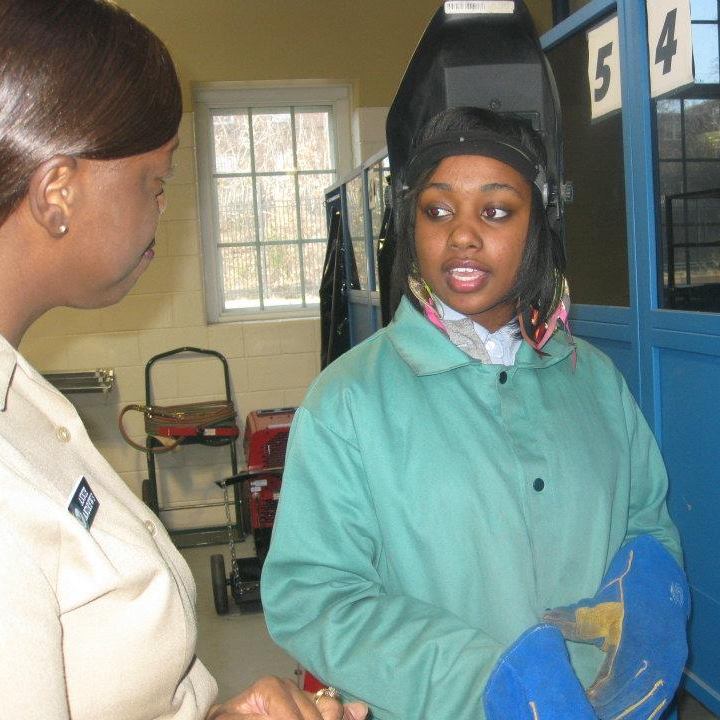
Note to principals: They will come to you to complain (having failed to convince the teacher) about a group/team project that they feel threatens their GPA, or that members of the group or team aren’t “serious” about getting the highest grade possible. Use this as a teachable moment for the student to learn empathy, compassion and social responsibility; but also reassure them that you will address the issue–and then do so! Meet with the departmental chairpersons and teachers privately to come up with a school-wide-grading plan and policy that won’t let the GPA’s of these students suffer if they engage in group or team work/projects. They will not be entering into a post-high school solo-work-world and therefore there is humility and some important “making others around you better” skills that they need to learn.
• They don’t feel the need to necessarily like the classroom assignment, they only feel that they need to get the highest grade allowable for that assignment; but they definitely want to be graded fairly! Teachers: For all students, be very certain as to why you gave a particular grade (have documented standards-based evidence). Also, a clear set of grading rubrics are always essential. These students in particular are going to involve the principal into their “grade appeal” process if not satisfied with your explanation-decision, when your principal would really rather be doing something else! And for goodness sake don’t follow that very common but silly public education unofficial rule of not giving a student an “A” for the first semester of work (allegedly as a ‘motivator’); you must give the student the grade they earned or you are degrading your grading system and giving your principal extra problem solving work headaches!
• The highest performing students spend quality time doing homework and even more time studying; they clearly understand the difference between homework and studying. Too many 9th-graders are confused about these two very different (yet linked) exercises; also true is the bad idea they picked up somewhere that suggest one should only study for an upcoming test.
• For Black and Latino high-achieving students, being in the right school (where high academic achievement is honored, recognized, and praised) will give them the confirmation and self-authority permission and protection to act and be smart. Not being forced to hide their smartness allows these students to produce academically at an amazingly higher level then they themselves expected, or what was indicated by their K-8 academic performance in classrooms and on standardized test scores. For principals: No matter how high an entering student’s ‘documented’ academic performance level, you must seek to push-them-up to the next (and then the next) performance level; often they may not be aware of their own possibilities, especially if they were not pushed to their ‘natural capability levels’ (or had no serious previous competition) in their K-8 school experience.
• If there is extra credit or bonus points to be earned for an assignment, project, or on an exam, they will take advantage of it. Given the option of taking a hard or easy assignment or project, they will opt for the most challenging, knowing (or not knowing) that they are positively influencing the teacher’s attitude toward them! (Again, teachers are human, too!)
• These students are first in line (having the academics and behavioral qualifications) for: paid and unpaid internships, service projects, special in- and out-of-school projects, programs, activities, and educational trips. All of these are opportunities for informal education, knowledge capacity building, and experience to enhance the student’s resume and biographies for scholarships and college admissions.
• High-performing students don’t waste their time on violating even the smallest school rules, such as the dress code. They seem to have little interest in the average act of teenage rebellion to adult rules. They weigh all of their actions against their primary principle and goal of high academic achievement. These students will, however, often voice their concerns about a particular rule to the principal, even as they follow that rule.
• Their style of notetaking and notebooks (well organized by subjects
and topics) are themselves, essentially course study guides!
• These students are totally not invested (or interested) in the personalities or stylistic traits of individual teachers or administrators; they are absolutely focused on their own personal educational mission. They will not confront or publicly challenge a teacher, but will not hesitate to come to the principal privately if they feel they have not been treated fairly or in the “adult definition” of a respectful way. They will avoid if at all possible involving themselves in any situation that will hurt their final grade.
• The students seem to get from day one that they are on the last leg of their K-12 public school experience. These students see every class, grade on a report card, any and all exam scores, term-semester success, and the significance of each of the four high school years as extremely important to their future life objectives.
• These students have their own personal high standards and expectations. These personal high standards and expectations are displayed in their work product in every class, regardless of the level of the standards and expectations of a particular teacher. For example, once they master the correct research paper and essay style/format they learned in their English class, they will utilize that correct style and format in every other subject area where a written response to an assignment or exam is required. In other words, they will write as if every teacher reading their work-responses is their English teacher.
• These students have considerable control of their school image, which is important when over a four-year period something can easily go wrong. I keep reminding students that the teacher you annoy today, is that same teacher you will need to write a letter of recommendation (LOR) for some important thing you want; and that writing a LOR is not a mandatory part of their job description! A good image in a school is like a gift that never stops giving a reward. Once at Phelps, a high-performing honor roll student was mistakenly (due to a teacher’s error) referred to the in-school suspension room (ISS). The Dean, sensing that something was very wrong, had security track down the principal. I spoke to the teacher and the situation was immediately corrected and she was removed from the room with an apology from the teacher. It is important to note that even though she knew she was innocent, she still reported to ISS quietly. This is pretty astounding since some of the guiltiest referrals to ISS dramatically claim that the teacher is wrong or has it out for them. What was also so amazing is that even the legitimate residents in the ISS asked her, “What are you doing here?” Or, as one student remarked, “This must be the end of the world if she is in ISS!”
• There is no shame in their game when it comes to earning high grades. When these students have a research project or presentation, they will have no problem asking any and every adult in the building including custodians, cafeteria supervisor, nurse, APs, art or technology teacher, and yes even the principal for help. On more occasions then I can remember, I had to dip into my own pocket when these students approached me for something they needed for a school assignment or project; how could I say no!
• Despite the amount of time these students must have spent studying in order to maintain their honor roll status, I often found it interesting that they were also very “school activities” busy. They were multitaskers in many different (three to six) extracurricular activities such as the track team, dance company, band, debate team, volleyball team, art club, etc.; along with this extracurricular involvement, these students also often served in student government as ambassadors and presenters for special tours, events held at the school as well as serving as representatives and spokespersons for the school at community, city, state, and national events. It is important to note that the regular academic course load for these students was often made heavier, starting in their junior year as they began to take multiple advance and AP courses.
• Near or perfect punctuality and attendance records. Not ever late to class and don’t go to the bathroom during class, less they miss something being taught.
• For Girls: They are the chief recognizers and protectors of the respect that is properly due to them by virtue of their existence. A high sense of self-worth and self-esteem are the greatest attributes, motivators, and guarantees of a young lady’s success in graduating from high school, regardless of the level of academic achievement potential. These ladies (in the best meaning of the word) don’t allow themselves to be physically or emotionally devalued, and see their personhood as worthy and entitled to proper attention that is appropriately due to a woman who is seen by males as meeting the standard of an honored friend or potential wife and mother of the young man’s children. These ladies of distinction are not practice crash dummies; their very presence demands, and is associated with, the highest expressions of honor. These young ladies are also singularly focused on developing and enhancing what they believe to be the most attractive part of their anatomy, their brains.
• For Boys: These gentlemen (in the best meaning of the word), seem to have a powerfully high definition of manhood. This affirmation of what it means to be a man is tied to their powerful sense of self-worth which is connected to a commitment to be high academic achievers. But this emotionally intelligent position also allows them to recognize and respect the self-worth in others. They are not driven by the lowest and most primitive definitions of maleness which is characterized by the objectification and exploitation of their fellow female students. Further, those Black and Latino male students who dare to be and act smart openly are already comfortable practitioners of how they should behave with women in our society. And (I’m sure I’ll be put in ‘cancel-land’ jail for this one!) also, these ‘dare-to-be-smart,’ academically high-achieving Black and Latino males are in my view, the most emotionally empowered, independent thinking, self-actualizing, and powerfully mature acting students in any American Title-1 high school.
• These students in the top 25 of their cohort are clearly aware of the college scholarship acquiring value that is attached to their GPA ranking. With all of the news media and the public’s attention being focused on the problem of student college tuition debt, they are conscious of placing themselves in the most advantageous and best scholarship acquisition position. Especially, since many of them are anticipating a costly graduate or professional school education beyond 4-year college. And, in a Title I high school, parental money for college is far from a given!
• They are departmental-guidance-college career office bulletin board watchers! They are constantly searching for opportunities such as internships, scholarships, college tours, speakers visiting the school, etc.
• They make sure that critical assignment deadlines are “trip-wired” (an early warning system) in their planner/calendar. For example, if a research paper is due on a particular day, they will put two dates in their planner; the date they wish to start the project and the date it is actually due to be turned into the teacher. This approach increases the possibility that they will receive a high grade on long-term projects and assignments since they are not trying to complete these tasks “two days before it is due!”
• They establish good connections early on with the school guidance/career office staff (guidance counselors are eager to work and advise high academically-performing 9th-grade students who seek them out). These students have a great appreciation and respect for the guidance/career office staff persons, but they realize that they are ultimately responsible for reviewing their own transcripts and making sure they are in the right classes, and on track to graduate. I always tell students—no disrespect to the guidance counselors—but in a high school where there is a large number of students, with a huge part of the administrative work being done by computer systems, there is always the possibility of errors. Every student must take ownership of their transcript review process to make sure that they are in the right classes and on the right path to that graduation outcome they are seeking.
• They are generally good test-takers (or work hard at making themselves good test-takers), along with the ability to discern the individual teacher’s standards and requirements; they then come up with a strategy to effectively meet those standards and requirements. Principal: It helps them and all students if the school and its principal resist the modern and popular (and hypocritically and selectively applied by many in our nation) anti-standards trend; prepare students to embrace and conquer standardized exams!
• The students who are able to effectively realize their interest in a STEM major/career, will start the process in the ninth grade. Planning for a STEM future means planting prerequisite seeds early and throughout the high school experience; they will ask: “What are the college STEM programs I am applying to looking for in the profiles and transcripts of prospective students?”

A F.I.R.S.T. Robotics Team: A wonderful STEM program for high schools— https://www.firstinspires.org/
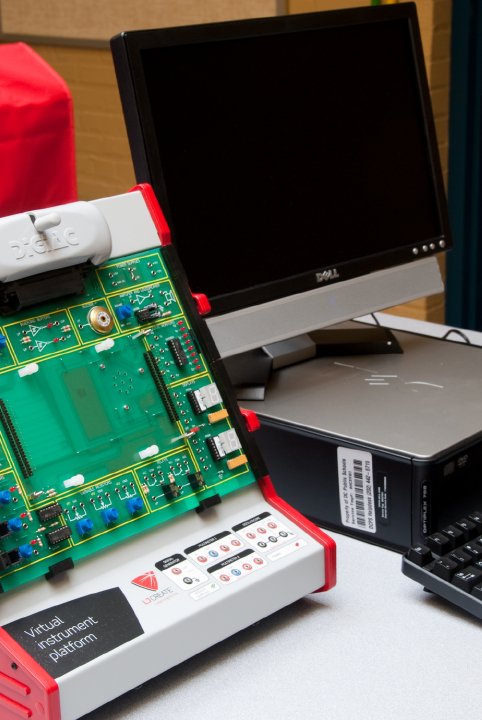
Note to principals: It is always easier to opt out of a STEM career goal than it is to opt-in as a high school junior or senior (difficulty in enrolling in the necessary courses). This is why I advocate that every high school student should take four years of mathematics and four years of a laboratory science. In this way, the student can still pursue a STEM major in college regardless of their high school courses profile. In any event, having a strong STEM course profile on your transcript won’t hurt a student, regardless of their intended college major. Those students planning to pursue a Pre-law, English Literature, or an Ethno-musicology major in college are helped, not harmed, by having taken and passed an advance math course and physics. Meeting the goal of graduating from high school is best facilitated when the student designs and follows a four-year pacing successes chart ( the GCPC–chap. 7 RTTPO); a student is always aware (or made aware) of where they stand academically at the end of every semester they are in school. I also think of this plan as an antidote and guide through the hectic last year of high school. This is a time when a great deal of things are going on in the school and personal lives of seniors; like all of the “senior activities” and preparing for that next major step into the adult world. There are many tasks that need the student’s attention and time. And, of course, these students still have a full year of full-time classes, some of which might be advance or AP courses. To successfully navigate the end of their K-12 experience and positively start off in a good place for their new post-high school life, they will need a good (GCPC) plan!
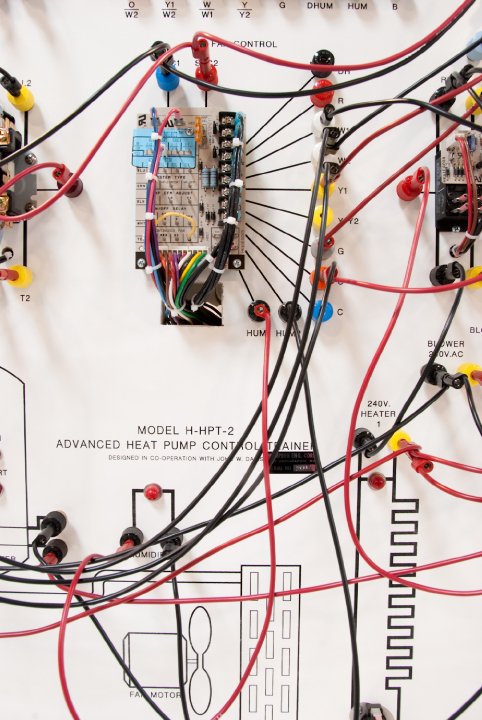
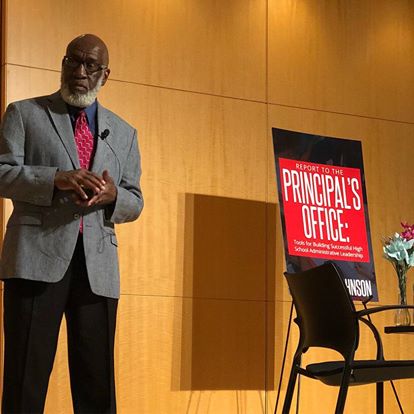
In conclusion principal:
The critical art and science of the principalship are measured by what you can do with many different students (diversely and differently challenged), who will show up to your school building exhibiting a broad spectrum of academic performance readiness, potential and aspirational dreams. It’s the ultimate school leadership ability (and what I looked for as a superintendent) to craft and cause: All Academic Performance Cohort Boats to Rise!
For sure, there are many success-impacting factors (variables) in a new ninth grader’s life that you can’t control, such as poverty, homelessness, and the presence or absence of parent push-pull power (indeed, some parents, and not others, are going to read this blog and utilize it effectively). However, you (reading this chapter excerpt as a professional educator) can maximize your efficacious leadership capabilities by expanding your strategic planning supervision by implementing school-wide practices that will help students to fully develop their capacities to be successful first-year high school students. Be a positive active interventionist by effectively executing all 30 chapters of RTTPO (creating a “good and highly-effective school”); this will, of course, improve the successful graduation potential for all (9-12) students at all grade levels; however, setting some school ‘sub-mission’ goals like getting all 9th-graders to be well-organized, to pass all of their classes and understanding how to navigate the Carnegie grading and high school promotional/graduation system, is critical to reaching your school’s overarching major-mission goal of having all students to realize a high-quality graduation status and diploma in four years. You hurt your own personal, the staff’s energy and talent, and the school’s potential to be great with efforts that don’t pay tremendous singular attention to that freshman class. Their academic success or failures will significantly impact your school’s quality profile; but most important, how this cohort performs individually and as a group will greatly impact their future life-possibilities. In the final calculation, helping 9th-graders realize, reach and achieve their best academic and personal-empowerment-skills potential is one of the most professionally worthwhile and ethically correct thing a principal can do!
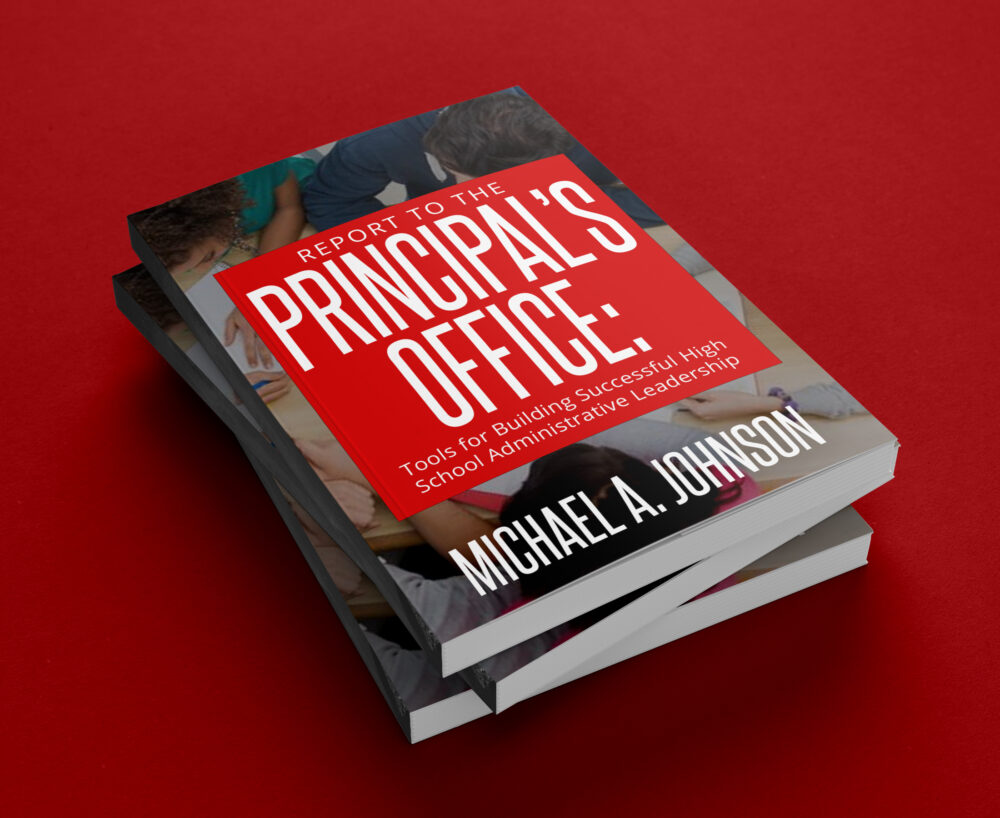
Report To The Principal’s Office: Tools for Building Successful High School Administrative Leadership.
- The main category of the book: Effective High School Building Leadership.
- Other subject categories: Preparation for the School Principal’s Certification Exam and the School Building Appointment Interview; School Supervision and Administrative Leadership; The Criteria for Selecting and Evaluating a School Principal, Job Requirements, and the Job Analysis of the Principalship; The Structure, Functional Components, and Organizational Elements of a High School; Effectively Managing Administrative and Instructional Practices That Raise Student Academic Achievement; Effective Organizational and Institutional Leadership.
Report To The Principal’s Office: Tools for Building Successful High School Administrative Leadership. Available at:
Amazon: https://www.amazon.com/Report-Principals-Office-Sucessful-Administrative/dp/0692066314
Barnes & Noble: https://www.barnesandnoble.com/w/report-to-the-principals-office-michael-a-johnson/1128850262?ean=9780692066317
Books A Million: https://bit.ly/2LbTeYD
Good Reads: https://www.goodreads.com/book/show/40406669-report-to-the-principal-s-office
Better World Books: https://www.goodreads.com/book/show/40406669-report-to-the-principal-s-office
Book Website: http://reporttotheprincipalsoffice.net/
About the Author:
Michael A. Johnson is a native New Yorker and a proud product of NYC’s public school system. This was also the city where he spent the majority of his personal and professional life. He has served as a public school teacher, Science Skills Center director, principal, and several years as a school district superintendent. Over an 11-year period, he led in the designing, building, and serving as the principal for two state-of-the-art Science, Technology, Engineering & Mathematics-Career Technical Education (STEM-CTE), Title 1 urban high schools. He also served as an adjunct professor of Science Education in the School of Education at St. John’s University.
